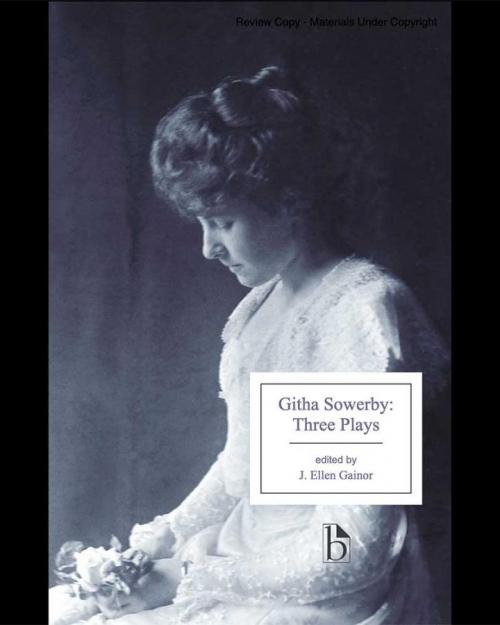Playwright Githa Sowerby (1876-1970) became an overnight sensation when her first play, “Rutherford and Son,” opened in London in 1912. But despite a triumphant first run, an American tour, and translation into several languages, Sowerby’s early success did not continue.
Although she wrote into the 1950s, her subsequent plays saw little or no production during her lifetime, until a 1994 revival of “Rutherford and Son” at London’s National Theater – in addition to more recent productions in New York and Canada – renewed theatrical interest in her work.
In a new critical edition of this play and two others of Sowerby’s, J. Ellen Gainor, professor of performing and media arts in the College of Arts and Sciences, argues for the lasting merit of her artistry.
“With historical hindsight, we can see Sowerby’s experience as comparable to that of many other women writers who struggled to achieve lasting recognition, especially when their work was perceived as critiquing the forces restricting women’s lives,” Gainor wrote.
Gainor discovered Sowerby’s play “Rutherford and Son” in the 1991 anthology “New Woman Plays,” which sought to include in theatre history plays by women in the late nineteenth and early twentieth centuries and to inspire production of and scholarship on “these neglected but compelling dramas,” she said. She gained further interest in Sowerby when she discovered connections with dramatist George Bernard Shaw, the subject of her first book.
“I think that audiences in 1912 responded to the vivid characters and gripping narrative” of “Rutherford and Son,” Gainor said. “The issues Sowerby raised about industrial capitalism and about the strictures around women’s and men’s roles in society would have been familiar to theatregoers who understood the stage as a place to explore social problems of the time. Those concerns, and the compelling world she depicts, are still very real and relevant to audiences today.”
Set in northeast England, “Rutherford and Son” dramatizes the tensions that arise when a single-minded patriarch prioritizes the family glassmaking firm over the well-being of his three children.
Sowerby’s second full-length play, “A Man and Some Women” (1914), is the “soul-mate” of “Rutherford,” Gainor wrote, and features a sympathetic male protagonist, Richard Shannon, whose wife and unmarried sisters depend on his income. His cousin Jessica, an independent professional woman, offers Richard understanding and support, which leads to familial conflict.
In the third play in the collection, “The Stepmother” (1923), a young woman, Lois Relph, receives an inheritance that she places in the care of the man who becomes her husband. But he squanders her fortune, as well as her earnings that support their family, bringing them to the brink of financial ruin and jeopardizing her loving relationship with his daughters.
“In the aftermath of the Great War, with suffrage secured, opportunities for women expanded,” Gainor wrote. “Yet despite these advances, Sowerby demonstrates how precarious women’s lives and livelihoods may remain.”
All three plays center on families and examine the rights and roles of women – themes dismissed by some critics up through the late twentieth century as unimportant.
Moreover, the very fact that Sowerby was a woman interrupted her success, Gainor said.
“When ‘Rutherford’ was initially staged, the playwright was listed as K. G. Sowerby, and critics assumed that play was written by a man,” she said. “Had they known the author was female, the piece would in all likelihood not have been as favorably received.”
Once Sowerby’s identity was known, critics’ view of her work changed, and she never achieved similar success, despite writing other strong pieces. And little has changed in over a century, Gainor said: “Women theatre artists are still struggling to gain equal access to professional opportunities. The percentage of women playwrights whose work gets professionally produced, or women who are hired to direct, is significantly smaller than those statistics for male artists.”
“When Sowerby died in 1970, she thought no one valued her work, which is tragic,” Gainor said.
Gainor says that Sowerby’s plays are still relevant and stageworthy. In 2019, London’s National Theatre revived “Rutherford” again, to rave reviews, she said.
“It was so moving to be in the theatre with hundreds of other audience members – to appreciate together Sowerby’s expertise as a playwright and her impact as a feminist artist,” Gainor said. “She was a keen observer of her time and a writer skilled at capturing the vagaries of human relationships and human behavior.”
Read the story in the Cornell Chronicle.





